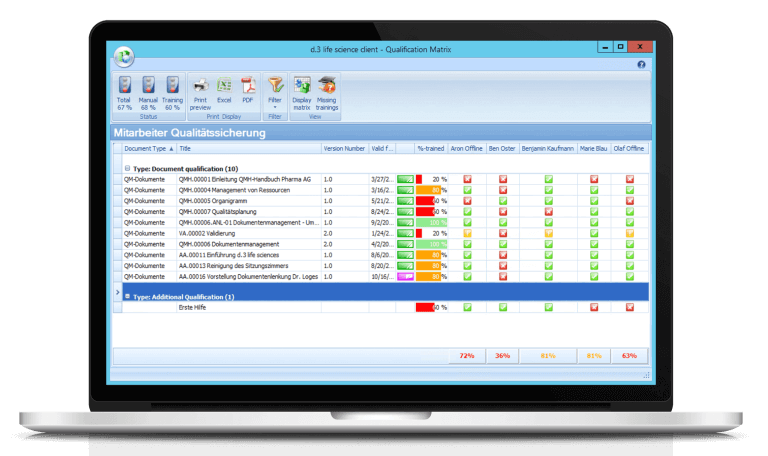
METASYS GmbH replaces exhausting search in Windows folder structures with full text search
"We used to work mundanely with Windows Explorer in the folder structure. But it was becoming increasingly difficult to find one's way around it. Today we work with controlled documents, digital release processes and a full text search like Google, among other things. The digital document management system works in an uncomplicated way and frees us from a lot of time-consuming, exhausting work. We are very satisfied with the entire project and would definitely recommend the system to others."

Environmental toxins such as mercury simply do not belong in wastewater: At the end of the 1980s, this idea was both plausible and progressive. With this idea, METASYS Medizintechnik GmbH began in 1989 as a small “tinkerer’s company” to develop technologies for amalgam separation for dental practices. And with success. Today, the company near Innsbruck in Austria has around 80 employees and several sales partners worldwide.
Avoiding environmental damage was the main motivation for Bruno Pregenzer and Werner Trawöger to found METASYS in the 80s. Pregenzer, an experienced dental technician, developed an amalgam separator that is now used worldwide to remove and recycle amalgam filling residues from dental practices wastewater.
Meanwhile, METASYS offers many products and services from dental equipment and hygiene products to the collection, separation and recycling of toxic waste and metals from dental practices.
Cost for regulatory requirements increased
With success comes growth, and for most companies this means that not only turnover and the number of employees increase, but also the effort required to meet regulatory requirements: Bureaucracy. Especially for companies in the European Union, this often adds up to several hours of work for formalities. Trend: increasing.
This subtracted valuable working hours of creative activities also at METASYS GmbH. And the existing, evolved infrastructures were less and less capable of providing a remedy over time. Dr. Florian Meischl, Head of Innovation and Project Management: “We used to work mundanely with Windows Explorer in the folder structure. The requirements on bureaucracy are not getting any less across Europe or around the world, so it has become more and more difficult to find one’s way around it.”
In principle, there is nothing wrong with storing files in Windows folder structures. But the devil can hide in the details. Employees need certain documents at the same time for different applications, such as for the approval of new technologies as well as for product-specific documentation, for example. A dilemma: In which folder should the document be stored? In both? In that case different versions threatened.
New document management system should work with ERP software
“That was no longer feasible,” says Dr. Meischl, “it made it difficult to keep track of things, because it was no longer clear to judge where new documents should be filed.” Consequently, METASYS employees were looking for a new solution – preferably a software that would also work well with the enterprise resource planning (ERP) software of the company Asseco.
Through a recommendation, METASYS GmbH establishes contact with Digital Life Sciences GmbH. The company has been a sought-after specialist for GxP-compliant documentation solutions since 2007. The keyword “GxP” refers to guidelines for good working practices that are particularly important in the pharmaceutical and medical industries.
After a presentation, METASYS GmbH was impressed by the range of functions and the price-performance ratio of the dls | eQMS from Digital Life Sciences GmbH.
Document control and training management
Three solution areas were crucial for METASYS:
- Digital document control
- Training Management
- Technical documentation
In January 2021, the starting signal was given for the project to migrate the existing data from the Windows folder structures into the digital document management system of Digital Life Sciences GmbH. “We were able to go live as early as the last week of April”, describes Torsten Heise, Head of Consulting and Project Manager at Digital Life Sciences GmbH. “This has already been an extremely fast project. We had the advantage that the METASYS project team was also given the time to work on the migration and that the specialist departments cooperated optimally.”
The core of the document management system is document control. It ensures that quality management (QM) documents, work instructions, standards and quality guidelines in particular are always easily accessible digitally from all workstations. All employees always work with the same document version and can create new documents based on templates, for example new standard operating procedures or work instructions (SOP).
In addition, documents get attributes. This is metadata that shows, for example, to which area a document belongs. “We used to store this information in Excel tables”, describes Florian Meischl, “in which it was then possible to see, for example, which document belonged to which product.”
Thus, the regulatory affairs department can get, among other things, all purpose statements for all products with a few clicks. Other departments can quickly retrieve the purpose statement for a particular product by searching for the product in question in the document management system. Meischl: “The full-text search is also a huge advantage, similar to Google.”
Digital process orders and speeds up release processes – sometimes to one hour
Digital processes are also part of document control. For example, reviewers can place annotations digitally and return everything to the author in the system. This avoids, among other things, searching for the latest version within e-mail folders. The release also works “much faster and with less effort now”, describes Meischl, “in the past, employees had to run across the building and get signatures, now that works with a digital process.”
Among other things, in the document management system is stored which employee is authorized to review and approve a document. The system notifies the colleagues concerned in the defined order. Once a document has been satisfactorily concluded, the reviewers can sign it digitally and the document goes on ultimately to the quality management department. “Some release processes now only take an hour”, says Dr. Meischl.
Digital employee qualification saves many a classroom training session
Once a new standard operating procedure or work instruction (SOP) has been released, it must of course also reach those employees who have to comply with it in their daily work. METASYS uses Training Management for this purpose. This provides for a training manager who receives notifications from the document management system about new work instructions and then assigns the new instructions to the relevant employees.
These employees also receive a notification from the system and must read and sign the instruction. “This saves a lot of time because you can do without a lot of classroom training sessions”, says Florian Meischl. “This makes trainings run much more smoothly and easily. And, a big advantage: In the overview provided by the system, you can see at a glance which employees are missing which training. That’s important for the inspector during an audit, among other things.”
Advantages of digital document management
These are the advantages that digital document management offers METASYS compared to storing files in Windows folder structures:
- Quick retrieval of documents, e.g. via full text search
- Avoid redundancy – employees always work on the same version of a document
- Avoid duplicated filing
- Avoid shadow archives (e.g. local copies of papers on the respective computers of users)
- Shorter document run-times
- Transparency about the processing status of documents – where is the document, who is currently reviewing it, who is editing it?
- Controlled processes, e.g. for releasing documents
- More time for core tasks
- Paper saving
- Transparency regarding training processes
- Employees can simply sign digitally that they have taken a training course
Meischl’s conclusion: “We get a lot of positive feedback, and there is now much more time for creative things, especially in the development department. The system works in an uncomplicated way and frees us from a lot of time-consuming, exhausting work. We are very satisfied with the entire project and want to upgrade the modules Personnel Management, Contract Management and Change Control in the near future.” We would definitely recommend the system, it all worked well from the beginning.”
Learn more about the training management
Get a comprehensive overview of our versatile training management solution now.

